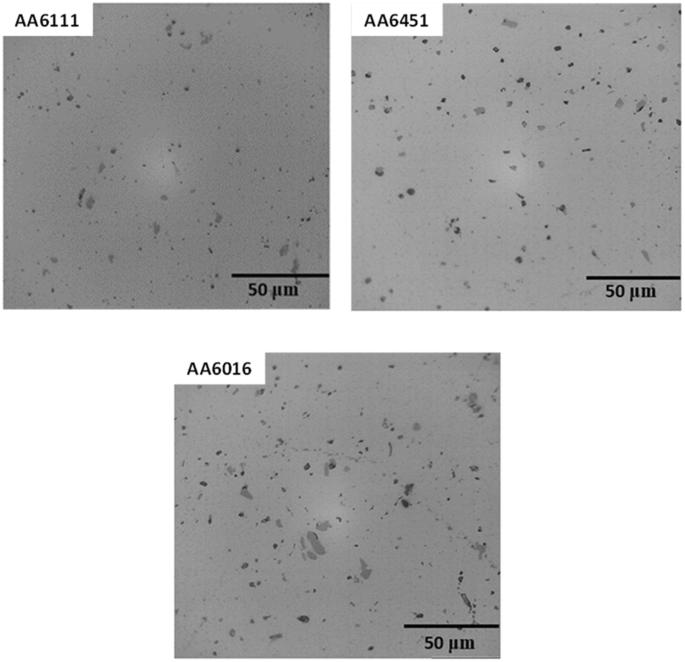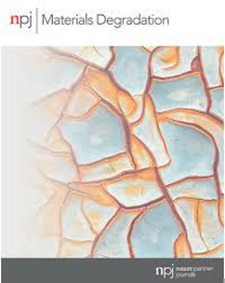了解微观结构和成分对 6xxx 铝合金局部腐蚀敏感性的影响
IF 7.6
2区 材料科学
Q1 MATERIALS SCIENCE, MULTIDISCIPLINARY
引用次数: 0
摘要
研究发现,6xxx 系列铝合金的腐蚀性能取决于成分和微观结构的微小变化。我们研究了 AA6111、AA6451 和 AA6016 这三种铝合金的腐蚀行为。从暴露试验中的腐蚀程度来看,主要含有 α(Al15 (Fe,Mn)3Si2) 金属间微粒 (IMP) 的 AA6111 和主要含有 β(Al8Fe2Si)金属间微粒的 AA6016 的整体腐蚀性能分别最好和最差。然而,对合金所测得的电位动力极化曲线的标准解释并不能预测这一排名。通过分别评估各组分相的电化学行为,进一步研究了这三种合金的腐蚀敏感性。使用标准合金铸造技术制造了各组分相的块状类似物。通过宏电池或微电池测试,对制备的 α 和 β IMPs 块体类似物以及三种合金基体相进行了测试。结合各组分相的行为,对合金的性能做出了解释。本文章由计算机程序翻译,如有差异,请以英文原文为准。

Understanding the effect of microstructure and composition on localized corrosion susceptibility of 6xxx aluminum alloys
The corrosion performance of 6xxx series Al alloys has been found to depend on small changes in composition and microstructure. The corrosion behaviors of three aluminum alloys, AA6111, AA6451, and AA6016, were investigated. AA6111, containing primarily α (Al15 (Fe,Mn)3Si2) intermetallic particles (IMPs), and AA6016, containing primarily β (Al8Fe2Si) IMPs, exhibited the best and the worst overall corrosion performances, respectively, as indicated by the extent of corrosion in exposure tests. However, this ranking was not predicted by the standard interpretation of potentiodynamic polarization curves measured on the alloys. The corrosion susceptibilities of the three alloys were further investigated by evaluating the electrochemical behavior of the component phases separately. Bulk analogs of the component phases were fabricated using standard alloy casting techniques. The fabricated bulk analogs of α and β IMPs, as well as the three alloy matrix phases, were tested using either macrocell or microcell testing. An explanation for the alloy performances was developed by combining the behavior of the component phases.
求助全文
通过发布文献求助,成功后即可免费获取论文全文。
去求助
来源期刊

npj Materials Degradation
MATERIALS SCIENCE, MULTIDISCIPLINARY-
CiteScore
7.80
自引率
7.80%
发文量
86
审稿时长
6 weeks
期刊介绍:
npj Materials Degradation considers basic and applied research that explores all aspects of the degradation of metallic and non-metallic materials. The journal broadly defines ‘materials degradation’ as a reduction in the ability of a material to perform its task in-service as a result of environmental exposure.
The journal covers a broad range of topics including but not limited to:
-Degradation of metals, glasses, minerals, polymers, ceramics, cements and composites in natural and engineered environments, as a result of various stimuli
-Computational and experimental studies of degradation mechanisms and kinetics
-Characterization of degradation by traditional and emerging techniques
-New approaches and technologies for enhancing resistance to degradation
-Inspection and monitoring techniques for materials in-service, such as sensing technologies
 求助内容:
求助内容: 应助结果提醒方式:
应助结果提醒方式:


